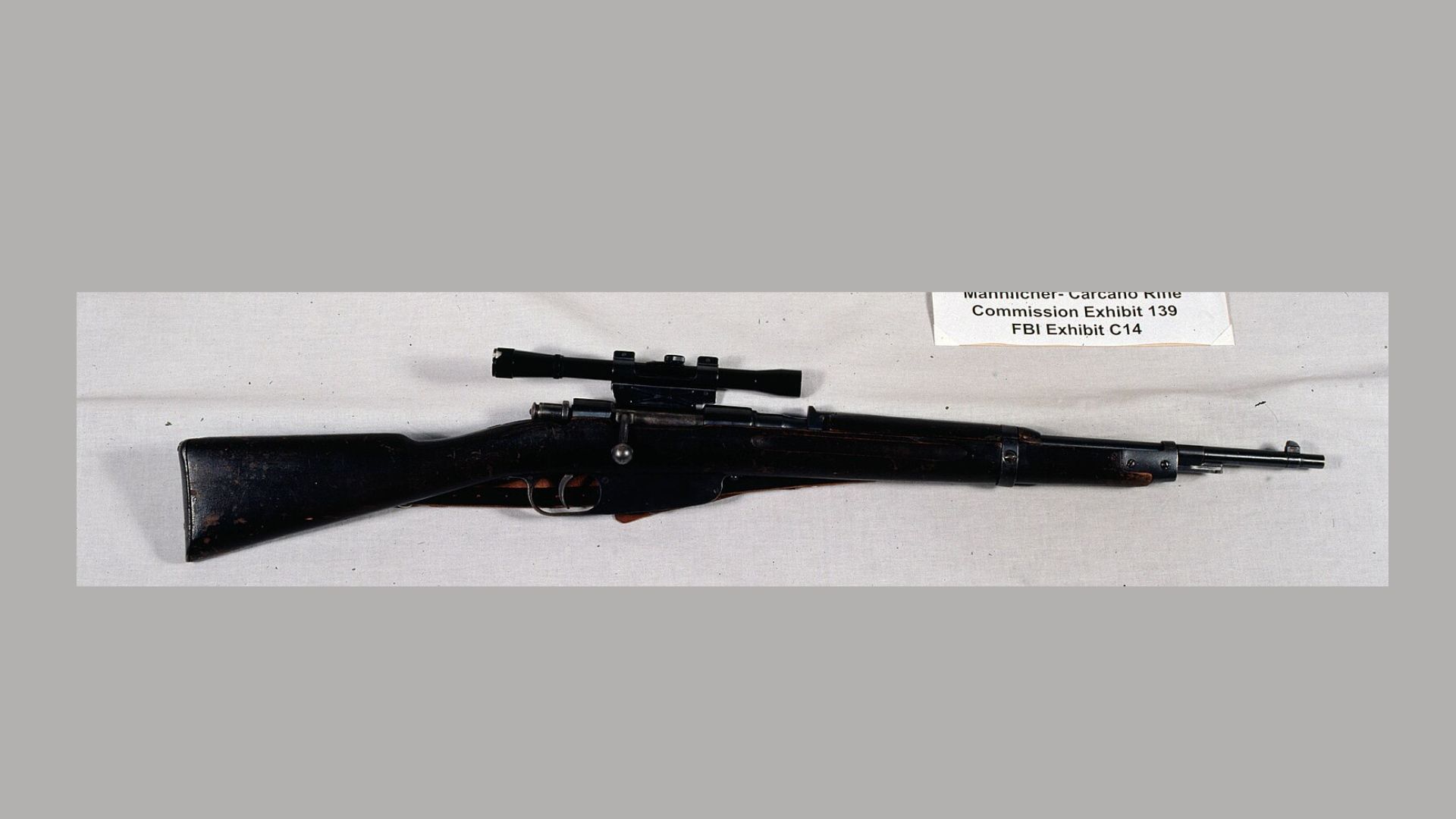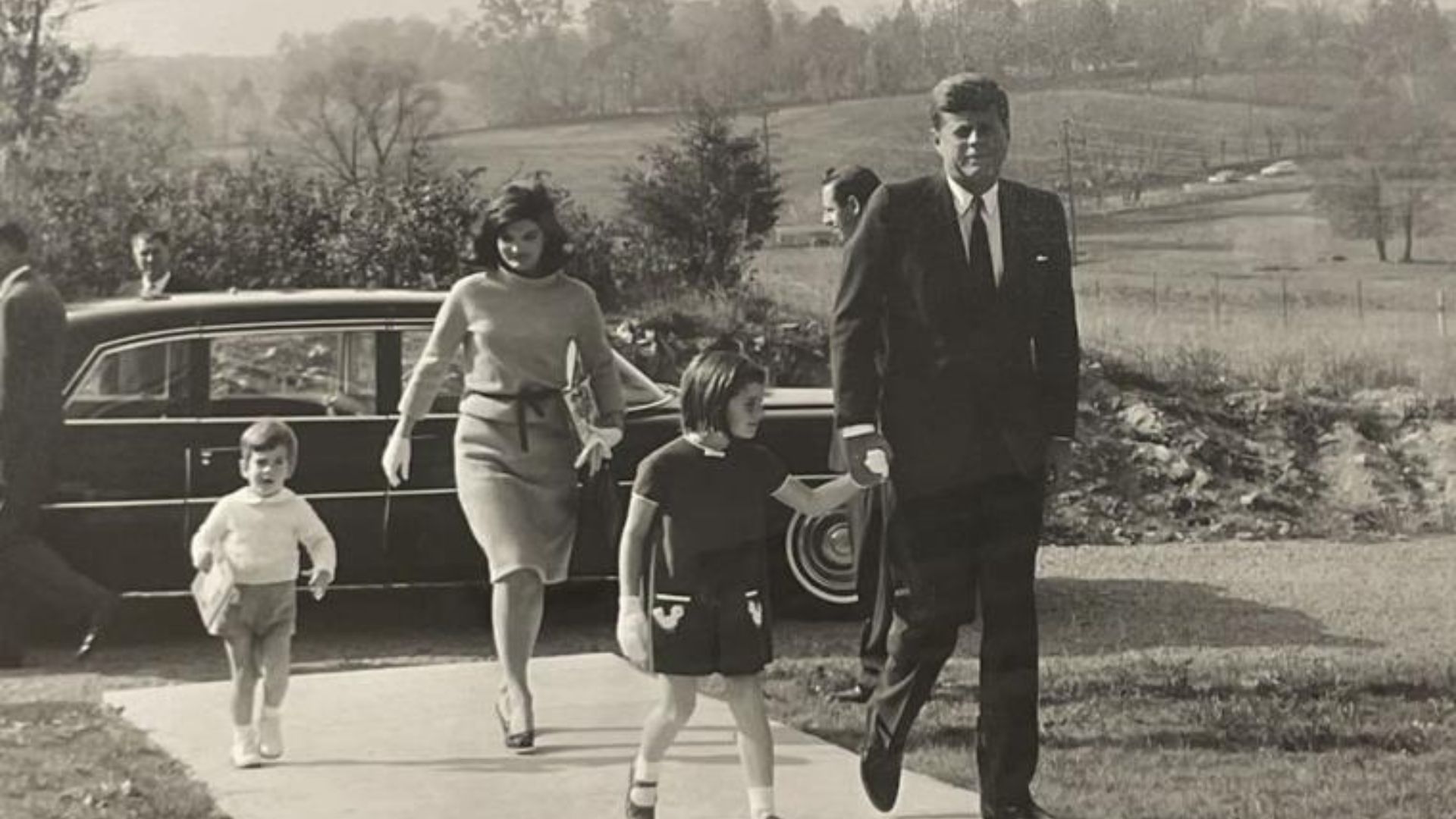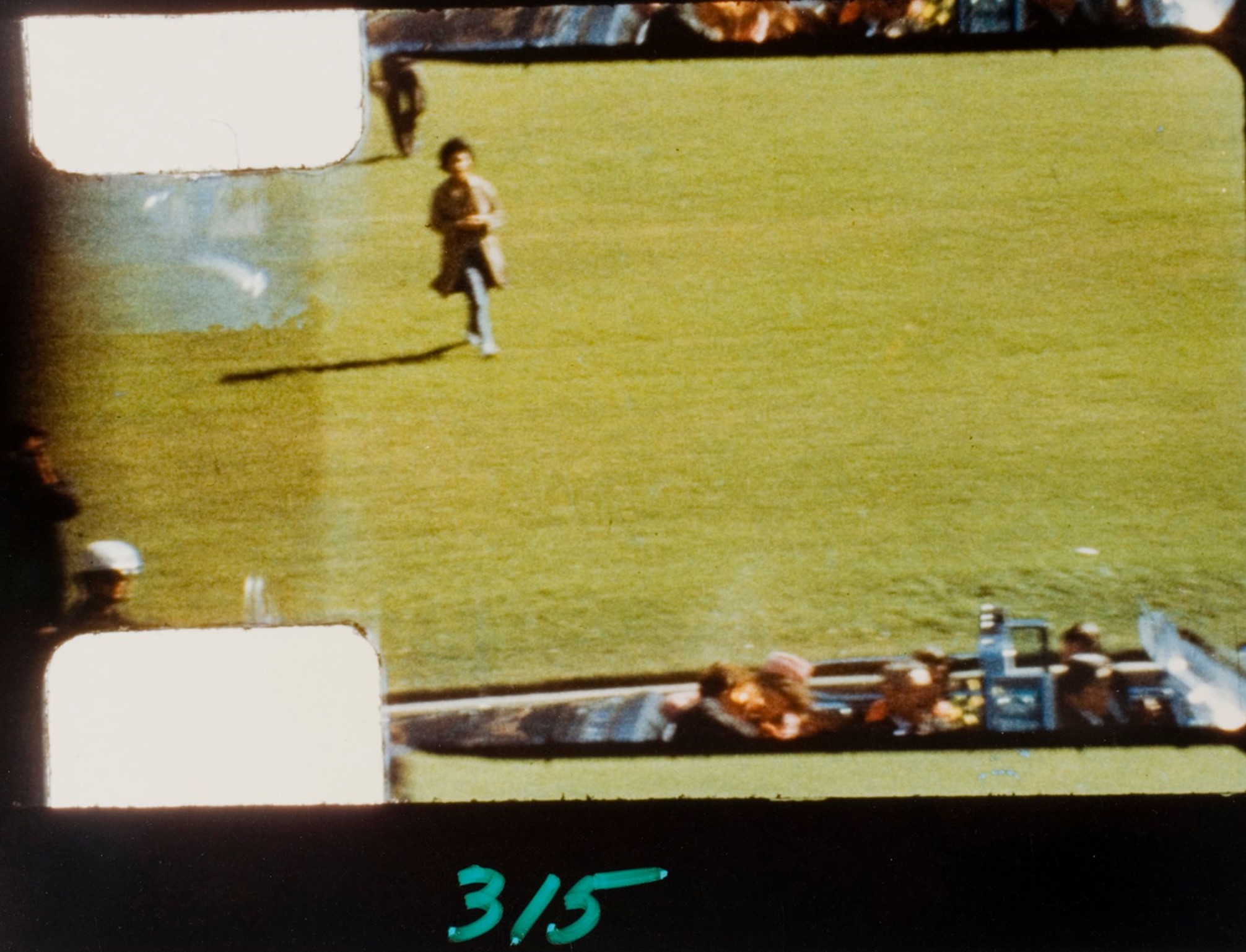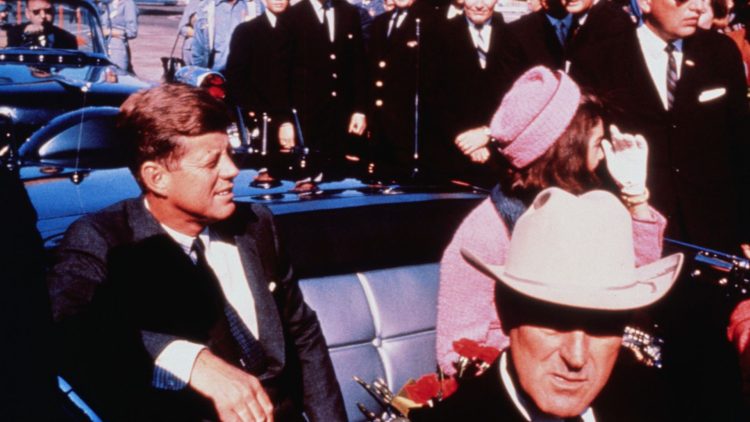On November 22, 1963, the assassination of President John F. Kennedy in Dallas, Texas, shocked the world and left a lasting wound on American history. The weapon used in this tragic event was a Carcano Model 91/38, a surplus Italian military rifle purchased by Lee Harvey Oswald for $19.95.

This article explores the rifle’s origins, specifications, and role in the assassination, shedding light on how an unremarkable military firearm became infamous as the gun that killed a president. Through meticulous research and factual accuracy, we aim to provide a clear understanding of this pivotal moment in history.
The Carcano Model 91/38: An Overview
The rifle that ended President Kennedy’s life was a Carcano Model 91/38, a bolt-action military rifle produced in Italy. The Carcano series of rifles were the standard-issue firearms for the Italian military, beginning in the late 19th century and continuing through World War II. The Model 91/38, also known as the M91/38, was one of the later variants in this long-running series.

In the press, you’ll often hear this referred to as a Mannlicher-Carcano. Ferdinand Mannlicher was an Austrian firearms designer whose bolt-action mechanism influenced many rifles in the late 19th and early 20th centuries. The Carcano rifle uses a type of bolt-action system that is somewhat similar to Mannlicher’s designs, although not identical. Because of this influence, it became common to refer to the Carcano as a “Mannlicher-Carcano.” However, the rifle is more appropriately referred to as just a Carcano, and that’s how we’ll continue to refer to it in this piece.
Originally designed by Salvatore Carcano in 1891, the Carcano rifles were known for their robust design and functionality. The Model 91/38 was an evolution of the earlier Carcano designs, intended to be a simpler and more cost-effective weapon during the latter stages of World War II.
It featured a shorter barrel and was chambered for the 6.5×52mm Carcano cartridge, a round that had been used by the Italian military for decades. Italian troops used the M91 in World War I during trench warfare and for longer-range engagements. During World War II, the Carcano M91 and its variants were the standard service rifle issued to the Italian military. It saw action in North Africa, the Eastern Front, and in the defense of Italy itself. Millions were produced.
After the war, large numbers of Carcanos were sold as military surplus. They ended up in the hands of various military forces and paramilitary groups the world over.
Technical Specifications of the Rifle
The Carcano Model 91/38 was a relatively lightweight and compact rifle, designed to be easy to carry and use in a variety of conditions. Here are the key specifications of the rifle:
- Caliber: 6.5×52mm Carcano
- Overall Length: 40.2 inches
- Barrel Length: 21 inches
- Weight: Approximately 7 pounds
- Internal Magazine Capacity: 6 rounds, fed by a clip
The 6.5×52mm Carcano cartridge was not the most powerful round of its time, but it was effective enough for military purposes. The round had a muzzle velocity of around 2,300 feet per second, providing sufficient power and accuracy for mid-range engagements. Despite its lower velocity compared to other military cartridges of the era, the 6.5mm round was noted for its relatively flat trajectory and mild recoil, which contributed to the rifle’s ease of use.
The bolt-action mechanism of the Model 91/38 was simple and reliable. It allowed the shooter to cycle rounds quickly, which was crucial in a combat scenario. The rifle’s internal magazine could hold six rounds, which were loaded via a clip. This design was typical of military rifles of the time, prioritizing reliability and ease of production over sophistication.
Oswald’s Purchase and Modifications
Lee Harvey Oswald, a former U.S. Marine with a history of defection to the Soviet Union, purchased the Carcano Model 91/38 through a mail-order catalog from the ad shown above. He used the alias “A. Hidell” to buy the rifle from Klein’s Sporting Goods, a Chicago-based retailer. The total cost for the rifle, which came with a mounted four-power scope, was $19.95—an affordable sum, even in 1963. Adjusted for inflation, that ends up being $205 in today’s currency. The rifle itself was sold for $12.78 and the 4x telescopic site was roughly an additional $7.00. He would have never made the shot without it.

The scope attached to the rifle was a Japanese-made Ordnance Optics scope with a fixed 4x magnification. While the Carcano rifles were not known for their accuracy, the addition of this scope significantly enhanced the rifle’s precision over longer distances. Oswald likely mounted the scope himself, a task that required only basic gunsmithing skills.
Given Oswald’s prior experience with firearms, his choice of the Carcano rifle was likely influenced by its low cost and the ease with which it could be obtained. While not a high-end sniper rifle, the Carcano was sufficiently accurate for the close-range shots Oswald intended to take.
In my experience as an Army-trained marksman, Oswald as a Marine trained sharpshooter, could have likely made the shots he is credited with. Over the years, the scenario was repeated many times with many shooters of varying backgrounds. A number of them could land rounds on target in the time Oswald had. The kill shot was fired from a distance of approximately 265 feet (about 81 meters). The president’s limo was moving away from the shooter at about 11 mph and Oswald was approximately 60 feet above his target.
A US military-trained special operations forces sniper would have no trouble making this shot repeatedly, even with the old Italian Army surplus rifle.
The Assassination: A Tragic Moment in History
On the morning of November 22, 1963, Oswald brought the Carcano rifle to the Texas School Book Depository, where he worked filling textbook orders. He had previously smuggled the rifle into the building, concealed in a brown paper bag and telling the person who took him to work that day that he was carrying curtain rods. From his position on the sixth floor, Oswald had a clear view of Elm Street, where President Kennedy’s motorcade would pass.
As the motorcade approached, Oswald readied the rifle. The vantage point provided Oswald with an unobstructed line of sight, allowing him to carefully aim at the President’s vehicle. At 12:30 PM, as the motorcade passed beneath his window, Oswald fired three shots in quick succession. It took between 8.4 to 8.6 seconds for the assassin to fire all three rounds.
The first shot is believed to have missed its mark, possibly due to deflection by a tree branch or street sign. The second shot struck President Kennedy in the upper back, exiting through his throat. The third and final shot hit Kennedy in the head, causing fatal injuries. Texas Governor John Connally, who was seated in front of Kennedy, was also injured by one of the shots, though he survived.
The entire sequence of events lasted only a few seconds, but it was enough to change the course of history. Within hours, Kennedy was pronounced dead, and the nation was plunged into mourning.
Ballistics and Forensic Evidence
In the aftermath of the assassination, the Carcano Model 91/38 became the focal point of extensive forensic analysis. Ballistics experts examined the rifle, the spent cartridges found at the scene, and the bullets that struck Kennedy and Connally. The analysis confirmed that the rifle’s 6.5×52mm Carcano rounds were consistent with the injuries sustained by the victims.

The Warren Commission concluded that Oswald acted alone. And that the Carcano rifle was the weapon used to kill President Kennedy. The rifle was found on the sixth floor of the Texas School Book Depository. And Oswald’s fingerprints were discovered on the stock and trigger. The evidence was compelling, leading to the official conclusion that Oswald was the sole perpetrator.
However, the rifle’s involvement in the assassination has not been without controversy. Over the years, conspiracy theories have emerged, questioning whether the Carcano Model 91/38 was capable of delivering the fatal shots with the precision required. Detractors argue that the rifle’s reputation as a mediocre military weapon casts doubt on the official narrative. Despite these claims, extensive testing and forensic analysis have repeatedly upheld the conclusion that the Carcano was the weapon used in the assassination.
The Legacy of the Carcano Model 91/38
The Carcano Model 91/38 was an unremarkable military rifle — until it was used to assassinate a U.S. president. Before November 22, 1963, it was just another surplus rifle, one of thousands produced during a tumultuous period in history. But in the hands of Lee Harvey Oswald, it became a weapon that altered the course of American history.

Today, the rifle is more than just a historical artifact. It is a symbol of one of the most tragic moments in American history. The Carcano Model 91/38 represents the fragility of life. It also shows the profound impact that a single act of violence can have on the world.
The rifle is currently housed in the National Archives in Washington, D.C., where it remains a subject of fascination and controversy. For many, it is a chilling reminder of the day when a nation’s hopes were shattered by a single bullet. For others, it is a symbol of the unanswered questions and unresolved mysteries that still surround the Kennedy assassination.
Despite the debates and conspiracy theories, the facts surrounding the Carcano Model 91/38 are clear. It was the weapon used to assassinate President John F. Kennedy, and its legacy will forever be tied to that tragic event. The rifle may have been an ordinary piece of military hardware, but its role in history is anything but ordinary.
Moving Forward
The Carcano Model 91/38 is a rifle with a history that spans decades. But it is best known for the brief moment in time when it was used to change the world.
On November 22, 1963, it became more than just a weapon — it became a part of American history. The assassination of President John F. Kennedy remains a subject of intense study and debate, but one thing is certain: the Carcano Model 91/38 will always be remembered as the gun that killed a president.
The information presented here is based on reputable sources and verified data. To the best of our knowledge, this provides a comprehensive and truthful account of the rifle that played a pivotal role in one of the most significant events in American history. We are well aware that numerous conspiracy theories remain. The investigation of this case will probably never be resolved to everyone’s satisfaction.
__
Disclaimer: SOFREP utilizes AI for image generation and article research. Occasionally, it’s like handing a chimpanzee the keys to your liquor cabinet. It’s not always perfect and if a mistake is made, we own up to it full stop. In a world where information comes at us in tidal waves, it is an important tool that helps us sift through the brass for live rounds.









